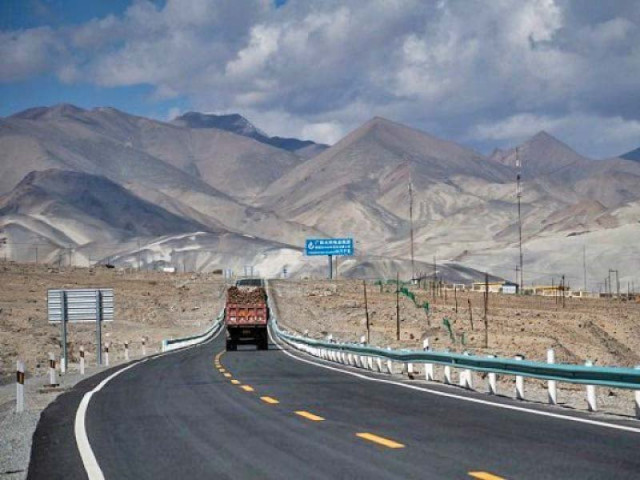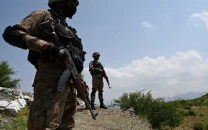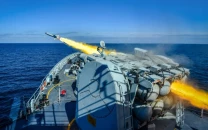BRI: China’s multi-trillion dollar venture
Large scale development to set up land infrastructure spans over 138 countries

Envisioned in September 2013, the Belt and Road Initiative (BRI) is a large scale development strategy involving around 138 countries across Asia, Africa, Europe, North America and South America.
The strategy was announced by Chinese President Xi Jinping during his visit to Kazakhstan in 2013 with an aim to capitalise on the improving relation of China with other countries for mutual benefit.
Under the multi-trillion dollar project, China aims to establish the overland routes for road and rail transportation called the Silk Road Economic Belt (Belt) and sea route titled 21st Century Maritime Silk Road (Road).
During the speech Xi said “to forge closer economic ties, deepen cooperation and expand development space in the Eurasian region, we should take an innovative approach and jointly build an economic belt along the Silk Road.”
According to him, the project is set to benefit vast amount of people of all countries which fall along the silk route.
He laid a plan to begin work in individual areas and to link them with one another over time to cover the whole region.
For the purpose, Xi called for stepping up policy communication, improving road connectivity and promotion of unimpeded trade among the nations involved.
The proposed economic belt along the Silk Road inhabits close to three billion people and represents the biggest market in the world with unparalleled potential.
“The potential for trade and investment cooperation between the relevant countries is enormous,” he said. “We should remove trade barriers, reduce trade and investment cost, increase the speed and quality of regional economic flows and achieve win-win progress in the region.”
Echoing his views at the China-ASEAN Expo in 2013, Chinese Premier Li Keqiang emphasised the need to build the Maritime Silk Road with orientation toward ASEAN and to create strategic propellers for hinterland development.
Several international and multilateral organisations have entered the project to financing it including Afro-Asian Economic Council, Asian Infrastructure Investment Bank, China Development Bank, Export-Import Bank of China, New Development Bank, Russia-China Investment Fund and Silk Road Fund.
Analysts see the Belt and Road Initiative as a giant leap towards globalisation while the world continues to draw similarities between BRI and the ancient Silk Road.
Agenda
According to the State Council of the People's Republic of China website, BRI is aimed at promoting orderly and free flow of economic factors, highly efficient allocation of resources and deep integration of markets.
It is also a step towards encouraging countries along the Belt and Road to achieve economic policy coordination and carry out broader and more in-depth regional cooperation of higher standards.
The involved nations are expected to jointly create an open, inclusive and balanced regional economic cooperation architecture that benefits all.
The Belt and Road Initiative focused on promoting connectivity among Asian, European and African continents and their adjacent seas, establishing and strengthening partnerships among the countries along the Belt and Road and setting up all-dimensional and composite connectivity networks.
“The connectivity projects of the initiative will help align and coordinate the development strategies of the countries along the Belt and Road, tap market potential in this region, promote investment and consumption,” it said. “They will also create demands and job opportunities, enhance people-to-people and cultural exchanges.”
The Belt and Road runs through the continents of Asia, Europe and Africa, connecting East Asian economic circle at one end and European economic circle at the other while encompassing countries with huge potential for economic development.
Land and sea route
The Silk Road Economic Belt focuses on bringing together China, Central Asia, Russia and Europe (the Baltic), link China with the Persian Gulf and the Mediterranean Sea through Central Asia and West Asia and connecting China with Southeast Asia, South Asia and the Indian Ocean.
Land based projects will focus on building a new Eurasian Land Bridge and developing China-Mongolia-Russia, China-Central Asia-West Asia and China-Indochina Peninsula economic corridors by taking advantage of international transport routes.
The 21st-Century Maritime Silk Road is designed to go from China’s coast to Europe through the South China Sea and the Indian Ocean in one route and from China’s coast through the South China Sea to the South Pacific in the other.
The Maritime Silk Road will focus on building smooth, secure and efficient transport routes connecting major sea ports along the Belt and Road. The China-Pakistan Economic Corridor and the Bangladesh-China-India-Myanmar Economic Corridor are closely related to the Belt and Road Initiative, and therefore require closer cooperation and greater progress.
“Investment and trade cooperation is a major task in building the Belt and Road,” it says. “We should strive to improve investment and trade facilitation, and remove investment and trade barriers for the creation of a sound business environment within the region and in all related countries.”
As a future strategy, free trade areas would also be discussed with respective countries along the route to tap true potential and expand cooperation.
The project also envisages enhancing financial cooperation, uplift efforts in building a currency stability system, investment and financing system and credit information system in Asia.
Under the initiative, China seeks to expand the scale of bilateral currency swap and settlement with other countries, open and develop the bond market in Asia, and set up and put into operation the Silk Road Fund as early as possible.
Major corridors
The main countries involved in the project lie in Eurasia and Africa. The most active countries under the initiative are China, Kazakhstan, Kyrgyzstan, Tajikistan, Turkmenistan, and Uzbekistan, Russia, Pakistan and Sri Lanka.
The projects under the Belt and Road Initiative (BRI) are mainly related to infrastructure development in the transport, energy, mining, IT and communications sector but also cover industrial parks, Special Economic Zones (SEZ), tourism and urban development.
Earlier, the project was named one belt one road but the title was later changed to belt and road initiative to avoid confusion.
The Belt and Road Initiative aims at transforming physical infrastructure through land corridors that roughly equate to the old Silk Road.
Around 60 countries are directly involved in infrastructure plans, primarily in Asia and Europe, Oceania and East Africa.
The cost of the initiative is estimated between $4-8 trillion.
The projects primarily receive financial support from the Silk Road Fund and the Asian Infrastructure Investment Bank while they are technically coordinated by the Belt and Road Summit Forum.
The first major project is the Eurasian Land Bridge which connects Western Russia to Western China through Kazakhstan. The project also includes the Silk Road Railway through China's Xinjiang Autonomous Region, Kazakhstan, Russia, Belarus, Poland and Germany.
The China–Central Asia–West Asia Corridor, another large scale project under BRI, runs from Western China to Turkey.
Similarly, the China–Indochina Peninsula Corridor connects Singapore to Southern China while China-Mongolia-Russia Economic Corridor will run from Northern China through Mongolia to the Russian Far East.
The Russian government-established Russian Direct Investment Fund and Chinese leadership created China Investment Corporation to create the Russia-China Investment Fund, which concentrates on opportunities in bilateral integration.
The China–Pakistan Economic Corridor (CPEC), another major project under BRI, connects China’s Kashgar city, Xinjiang to Gwadar port.
Major projects
The projects included in BRI pertain to transport, energy, technology, urban planning, tourism and special economic zones.
Internationally, projects related to transportation under BRI include Padma Rail Link in Bangladesh, Doraleh Multi-Purpose Port in Djibouti, Europe-China – Rail Link I & II, Khorgos Gateway Dry Port in Kazakhstan and Madhya Pradesh Rural Connectivity Project in India
Similarly, main projects related to energy include Yamal LNG Project in Russia, Nurek Hydropower Rehabilitation Project, Phase I in Tajikistan, Trans Anatolian Natural Gas Pipeline Project in Azerbaijan and Nenskra Hydropower Plant in Georgia.
Projects pertaining to urban planning include Amaravati Sustainable Capital City in India, Port City Colombo in Sri Lanka, Forest City and Melaka Gateway in Malaysia and Lake Toba Tourism District in Indonesia.
Major special economic zone under BRI comprise of Suez Canal Economic Zone in Egypt and Khorgos – Eastern Gate in Kazakhstan.
CPEC
A part of 21st Century Maritime Silk Road, the China-Pakistan Economic Corridor (CPEC) is a mega project under BRI, which connects Gwadar port with Kashgar, Xinjiang, China.
Initially planned to be completed at a cost of $46 billion, the value surpassed $87 billion in 2020.
The agreement for CPEC was signed in 2015 during Chinese President Xi’s visit to Pakistan.
The funding for the projects is done through China Development Bank, Asian Infrastructure Investment Bank, Silk Road Fund, Exim Bank of China and Industrial and Commercial Bank of China.
Under CPEC, China is assisting Pakistan in establishment of several projects related to energy, transport and technology.
China introduced early harvest projects under CPEC, which are expected to be completed by 2020. The aim of early harvest projects is to inject 10,000 megawatts of electricity-generation capacity in the national grid.
In recent years, China has widened the scope of CPEC to assist Pakistan with agriculture. As part of the assistance, teams of Chinese experts visit Pakistan occasionally to help it combat with problems such as low yield, locust infestation and hybrid varieties of major crops.
China has also planned to establish several special economic zones under CPEC.
The writer is a sub editor of the business desk



















COMMENTS
Comments are moderated and generally will be posted if they are on-topic and not abusive.
For more information, please see our Comments FAQ